
BlackBerry DTEK50 Prices
Important Note.
- All prices are in Pakistani Rupee (PKR)
- Prices may vary at stores and our effort will be to provide you with the updated prices.
- The latest price of BlackBerry DTEK50 was obtained on 17 مئی, 2019. The prices at the original stores had been updated on the respective mentioned dates.
- Find out WhatMobile price has dropped in Pakistan by selecting Notify Price Drop button
- Find out WhatMobile has better specifications by clicking Add To Compare Button find out what Mobile has better reviews by visiting our reviews section
- Find out WhatMobile is cheaper on which retailer by clicking Compare prices from retailers button
Search Terms
- BlackBerry DTEK50
Specifications
| GENERAL | |
| 2G Network | GSM 850 / 900 / 1800 / 1900 |
|---|---|
| 3G Network | HSDPA 850 / 900 / 1700(AWS) / 1900 / 2100 - USA HSDPA 850 / 900 / 1900 / 2100 - EMEA |
| 4G Network | LTE band 1(2100), 2(1900), 3(1800), 4(1700/2100), 5(850), 7(2600), 12(700), 17(700), 20(800), 29(700), 30(2300) - USA LTE band 1(2100), 2(1900), 3(1800), 7(2600), 8(900), 20(800), 28(700), 38(2600), 40(2300), 41(2500) - EMEA |
| Sim | Yes |
| Announced | 27/07/2016 |
| Status | Exp. release 2016, August 8 |
| BODY | |
| Dimensions | 147 x 72.5 x 7.4 mm (5.79 x 2.85 x 0.29 in) |
| Weight | 135 g (4.76 oz) |
| DISPLAY | |
| Display Size | 5.2 inches (~69.9% screen-to-body ratio) |
| Resolution | 1080 x 1920 pixels (~424 ppi pixel density) |
| MultiTouch | Yes |
| Protection | Scratch-resistant glass, oleophobic coating |
| SOUND | |
| AlertTypes | Vibration; MP3, WAV ringtones |
| LoudSpeaker | Yes |
| 3.5mm jack | Yes - Active noise cancellation with dedicated mic |
| MEMORY | |
| CardSlot | microSD, up to 256 GB |
| Internal | 16 GB, 3 GB RAM |
| DATA | |
| GPRS | Yes |
| EDGE | Yes |
| Speed | HSPA, LTE |
| WLAN | Wi-Fi 802.11 a/b/g/n/ac, dual-band, WiFi Direct, hotspot |
| Blue Tooth | v4.2, A2DP, LE, EDR |
| NFC | Yes |
| USB | microUSB v2.0 |
| CAMERA | |
| Camera Primary | 13 MP, f/2.0, phase detection autofocus, dual-LED (dual tone) flash |
| Camera Features | Geo-tagging, touch focus, face detection, HDR, panorama |
| CameraVideo | 1080p@30fps |
| CameraSecondary | 8 MP, f/2.2, 1080p |
| FEATURES | |
| Processor Cores | Octa-Core |
| OS | Android OS, v6.0 (Marshmallow) |
| CPU | Quad-core 1.5 GHz Cortex-A53 & quad-core 1.2 GHz Cortex-A53 |
| Sensors | Accelerometer, gyro, proximity, compass |
| Messaging | SMS, MMS, Email, Push Email, IM, BBM |
| Browser | HTML5 |
| Radio | To be confirmed |
| GPS | Yes, with A-GPS, GLONASS, BDS |
| Java | No |
| Colors | Black |
| Others | - Fast battery charging: 50% in 51 min (Quick Charge 2.0) - MP3/WAV/eAAC+/FlAC player - DivX/Xvid/MP4/H.265 player - Photo/video editor - Document viewer |
| BATTERY | |
| Battery | Non-removable Li-Ion 2610 mAh battery |
| StandBy | Up to 576 h (3G) |
| TalkTime | Up to 17 h (3G) |
| MISC | |
Reviews

BlackBerry made a HUGE change to how it does mobile in 2015 when it confirmed it would be switching to Google’s Android OS for its phones going forwards. This was big news for the technology space, as BlackBerry shifting to Android is sort of like Apple switching to Windows; BlackBerry had ALWAYS used proprietary software up to this point and the reason for this was simple: security — BlackBerry’s favourite subject.
The BlackBerry PRIV, while a solid first attempt at an Android phone, left quite a bit to be desired. The keyboard felt like an afterthought and the performance, notably the battery life, wasn’t great. Still, BlackBerry debuted a lot of good ideas with that handset. Ideas that made Android safer and more secure. BlackBerry also opted for a stock build of Android as well, meaning Nexus-like visuals which is always a good thing.
And now BlackBerry is back with its first Android phone of 2016. It’s called the BlackBerry DTEK50 and BlackBerry claims it is the “world’s most secure smartphone” — a claim it is managing through monthly software updates. The BlackBerry DTEK50 is a different beast to what came before, though, as it’s a lot cheaper than the PRIV and it is also an all-touch device, making it more of a traditional Android phone.
In fact, I’d go as far as saying this is the most accessible phone BlackBerry has produced in YEARS. The company hasn’t had much success in the top-tier of the market, going head to head with the likes of Apple, Samsung and LG. But perhaps at this mid-market level it will be more successful? The “BlackBerry Brand” is still strong in many parts of the world, so all it needs is a device that registers with consumers en masse and the DTEK50, which is priced at just £275 offline, is quite clearly designed to be that device.
But does it tick all the boxes? Let’s find out shall we…
BlackBerry DTEK50 Review: Design
At its core, the BlackBerry DTEK50 is essentially the Alcatel IDOL 4, just with a soft-touch, dimpled plastic back panel. Now, I know what you’re thinking — you’re thinking: ewww, that’s a bit naff — but this just isn’t the case. The BlackBerry DTEK50 feels lightweight in the hand, despite its size, and it actually looks really damn good in the flesh.
It’s not “stunning” but then again this is a £275 phone from a phone maker that usually retails its handsets for double that amount. It reminds me a lot of a Nexus handset; I think that is down to its shape, styling, and because Android is not skinned. Either way, I liked the look of the DTEK50 as soon as I took it out the box. It doesn’t feel like any BlackBerry I’ve ever used before, but I think this is the point — the company is trying something different here.
Here’s a break down of the handset’s key design attributes:
- Dimensions: 147 x 72.5 x 7.4 mm
- Weight: 135 g
- Display Size & Type: 5.2in 1080p IPS LCD Display
BlackBerry is also no stranger to trying new things. I mean, in the space of a few years its switched mobile platforms and retailed one of the oddest, but coolest, phones ever created — the Passport. This time around, however, I feel the company is going after the OnePlus crowd; those who like their Android phones well-featured and specced, but costing under £300. And I think with the right marketing, BlackBerry will do very well in this regard.
There aren’t many design quirks on show here. The DTEK50 is unassuming with its black, slab-like qualities. On closer inspection, however, there are hidden details like its dual-front-facing speakers, which sit in a slight recess above and below the display, and aesthetically pleasing chamfered edges. The entire back panel is made of a rubberised, soft-touch material to aid grip, complete with an embossed BlackBerry logo. An upshot of this design element is that it looks very eye-catching, in my opinion, though I fear some users might not agree with me here.
You have a volume rocker on the right hand side, just above the circular smart key. On the left hand side you have the power/unlock button, a 3.5mm jack on the top of the handset and a microUSB port on the bottom for charging. The smart key is interesting in that it lets the user assign certain things to it. For instance, if you’re an Instagram addict you can assign the Instagram application to it, so when you tap the key the app opens. Another option: the camera app itself.
There is one thing missing on the BlackBerry DTEK50 which I'm a little upset about as it is something a lot of us are now used to having. The BlackBerry DTEK50 does not feature a fingerprint scanner, which means you’re back to using an unlock pattern to access the phone and this just feels very loooooooooong if you’re used to quick fingerprint access. I know, I know — not everybody is used to fingerprint access. This isn’t a deal-breaker, by any means, but I do find it odd that BlackBerry left it out, given nearly all new Android phones feature a fingerprint scanner. It's quite likely this was left out to cut costs though.
Other than this slightly odd omission, the BlackBerry DTEK50 is one hell of a charming handset. I was honestly very surprised by how much I liked the look and feel of this phone. I expected it to be cheap and tacky feeling, but it is quite the opposite, in fact, feeling immensely solid, yet lightweight in the hand. The proportions are spot-on as well, allowing for one-handed use as well as having enough size to make viewing media an engaging experience.
I really like the look of the BlackBerry DTEK50. My only issue is the lack of a fingerprint scanner. If that doesn’t bother you, though, there is no reason not to give this handset some serious consideration.
Blackberry DTEK50 Review: Display
Unlike the BlackBerry PRIV, the BlackBerry DTEK50 ships with a 1080p display and that’s just fine because 1080p is all you need on a phone. Sure, it’s nice to have a QHD panel but not having one isn’t the end of the world — even if you’re talking about a flagship handset like the OnePlus 3, for example.
There are many reasons why outfitting your phone with a 1080p panel is a good idea. But I think, in this context, there are two solid benefits: 1) it keeps the cost of the handset down, and 2) it improves battery performance dramatically. If you want QHD, you have plenty of options from Samsung, LG, HTC and Google. Just don’t kid yourself that having a QHD panel on your phone is a serious consideration because, put bluntly, it ain’t!
And what you have aboard the BlackBerry DTEK50 — a 5.2-inch Full HD display (1920 x 1080 resolution) — is just great. It’s perfectly sized, being not too big and not too small, and it is detailed as hell; everything just pops off the display, which makes viewing media and webpages a thoroughly engaging experience. Being an IPS panel does mean it lacks the vividness of AMOLED, however, but for fans of a more natural look this could be viewed as an advantage.
The DTEK50’s display is also fully laminated, meaning there is ZERO space between the glass and the actual display technology. This ensures colours and brightness are ALWAYS on point and, as a side-bonus, it means the phone is actually thinner, as there’s less empty space inside the chassis itself. All in all this is a top notch display that offers up A LOT of performance. Given the price tag, I assumed BlackBerry would have cut some corners in this context but once again I am pleased to report my assumptions were DEAD wrong.
Blackberry DTEK50 Review: Specs & Hardware
In order to keep the cost of the handset down, BlackBerry HAS made concessions. Now, said concessions are very subtle and you will struggle to notice where they’ve been made; the DTEK50 has a great display, great chassis, great camera and a bunch of awesome software features. But one area where you WILL feel the odd niggle is to do with overall processing grunt and this is down to Qualcomm’s mid-range Snapdragon 617 CPU.
BlackBerry has out-fitted the DTEK50 with 3GB of RAM in order to negate as many issues with performance as possible, and for the most part it works, the DTEK50 performs pretty solidly, however, every once in a while you WILL encounter a performance foible where the handset simply pauses for a moment, as if to catch its breath. This “pause” tends to happen most when gaming or once the battery is low and you’re pushing it hard, running CPU/GPU intensive applications and/or content.
Personally, I think a lot of this can be sorted with software optimisations. The DTEK50 will be receiving monthly updates, so it is likely BlackBerry will have something in the pipeline to ease this “pausing” issue. Also, the issue itself isn’t something that should dissuade you from considering this phone either, as it is something that only ever occurs when you’re pushing the phone outside its designed envelope of performance. For instance, I rarely play games on my phone, so in order to summon this gremlin I had to download a game — Dead Trigger 2 — to experience it. If you don’t play games, there’s a chance you won’t even encounter it.
Another concession has to do with storage: the BlackBerry DTEK50 comes with just 16GB of internal storage, which is rarely enough these days given the quality of images snapped and the intensive nature of applications. BlackBerry has countered this somewhat, however, by the inclusion of MicroSD (up to 2TB) that mercifully takes advantage of Google’s Adoptive Storage, which basically means you can run the card as native storage and install apps onto it. For me, this was a HUGE saving grace and yet another example of BlackBerry thinking itself around a problem that most OEMs would have simply ignored.
Tune In Tomorrow For Our Review of The BlackBerry DTEK's Camera
Write Your Own Review
My Recent Reviews
- Be first to post review for this product.
comments powered by Disqus




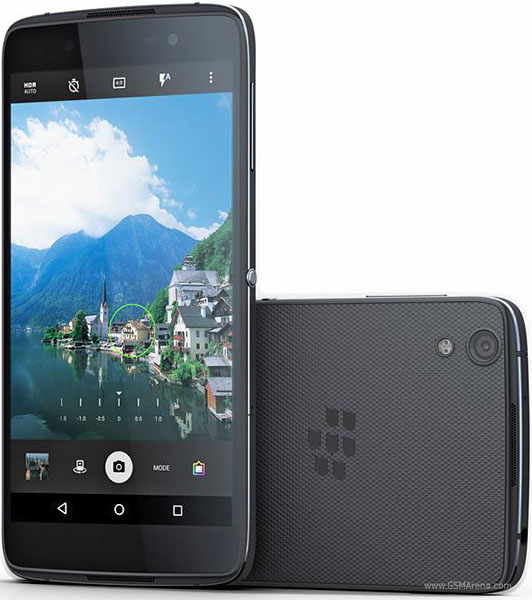
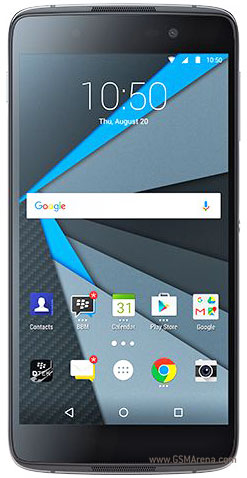







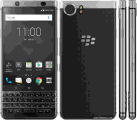


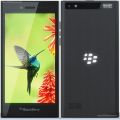
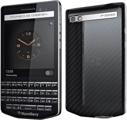

.jpg)











